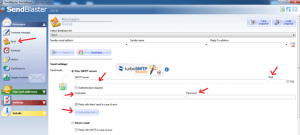How To Keep Your Emails Confidential?
Email is convenient, but you need to practice good email security habits in order to ensure that your email address and email messages don’t get into the hands of the wrong people. There are several steps you can take to protect your emails from being seen by anyone other than the person who is supposed to receive them.
Always Use “bcc” To Send To More Than One Person
If you have to send an email to more than one person, use the “bcc” field. Bcc stands for “blind carbon copy” and it stops people from seeing all of the email addresses you’ve put in. This helps keep everyone’s email address confidential. Ask all of your contacts to do the same if they put you on an email list so that your email address never gets shared with people who you don’t want to have it. This step helps protect your email address from people who may want to use it for nefarious purposes, such as to order lines of credit in your name or send you span or viruses.
Create a Separate Email Address for Confidential Communications
Don’t use the same email address for your personal emails that you use for your confidential communications. This allows you to have more control over your confidential communications. People who you communicate with on a business basis won’t have access to your personal emails, and you won’t accidentally send confidential information to friends or family if you keep the accounts separate.
Use Company Email Only for Confidential Communications
Be careful when using free email services such as Yahoo or Gmail or Hotmail; these services aren’t secure and third parties may be able to intercept emails meant for the recipient. It’s better to use your company’s email system, which is usually located behind a firewall. This will make it much harder for unrelated parties to get a hold of your emails.
Enable Security Whenever Possible
If your company’s email systems have security options, enable them for confidential emails. Many email systems allow you to mark emails as confidential; if you do this, the recipient must click a link inside the email to view the actual message. This extra layer of security can help protect your emails from prying eyes.
Put a Disclaimer at the Bottom of Your Emails
You may put a legal disclaimer on the bottom of your emails stating that the email is confidential and that only the intended recipient should read it. Of course, such a disclaimer doesn’t stop people from reading or distributing the email anyway, but it does make it clear that emails are confidential and make it likely that most people will respect your request. If you word your disclaimer appropriately, you will also be entitled to take legal action if someone does share your email or read it inappropriately.
Think Carefully About Contents
In addition to protecting your emails’ confidentiality, think carefully about what you want to include in confidential emails. It’s usually not a good idea to include extremely sensitive or personal information in email because if the email does get into the wrong hands, the information could be used in a harmful manner. Don’t talk about the results of medical tests or provide Social Security numbers in emails; keep these kinds of communications to other media where you can control privacy better.



